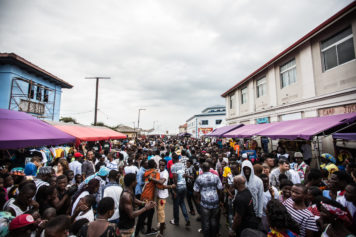The sidewalks and stalls of most African capital cities are littered with touristy trinkets: luminous wooden masks, photos of dreamy safari landscapes, cheap spears that Westerners must pull from their luggage at airports as they head home. The ubiquity of these “African” designs perpetuates an inaccurate perception of the continent as a society of tribal and provincial cultures—with equally antiquated art.
A more sophisticated portrayal of modern African artistry—”Making Africa: A Continent of Contemporary Design”—will open Saturday at the Vitra Design Museum in Weil am Rhein, Germany.
The exhibit is an ambitious collection of fashion, photography, fine art, and examples of architecture and urban planning. Evident in many of the designs is the entrepreneurial spirit of Africa’s creative class. Cities have become laboratories for vibrant innovation, which continues to sweep across the continent. African cities are undergoing revolutionary change right now. By 2020, it is projected to become the most rapidly urbanizing region of the world.
This show couldn’t be more timely: Africa’s designers, like its cities, have flown under the radar for far too long.
“Africa is a place that has been connected to trauma for a very long time,” says Amelie Klein, curator of “Making Africa.” Klein acknowledges there are lingering sociopolitical issues that do the continent, and its inhabitants, no favors in building a better image—sprawling slums, corruption and relentless poverty, for example. But Klein is confident that viewers of this exhibit will walk away with a more nuanced understanding of Africa and its role as a global design influence.
“It would be good for people to realize [Africa] is a place of innovation, where we can find solutions to design,” Klein says, “not only from a humanitarian point of view but from a larger and broader point of view. A point of view that connects with us and will have relevance in the global North also.”
Klein admits it’s “impossible” for any exhibit to completely capture the creative zeitgeist of an entire continent. Rather, she calls the exhibit a “suggestion” or “hypothesis” as to where contemporary African design is heading. She and her colleagues selected pieces for the show after traveling to countries on each corner of the continent and meeting with more than 70 African designers, academics, and intellectuals.
Read more at City Lab



